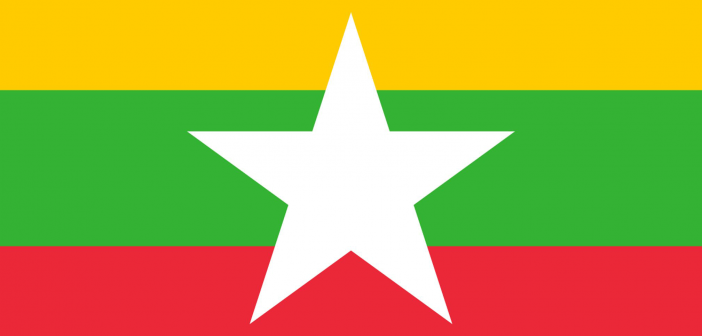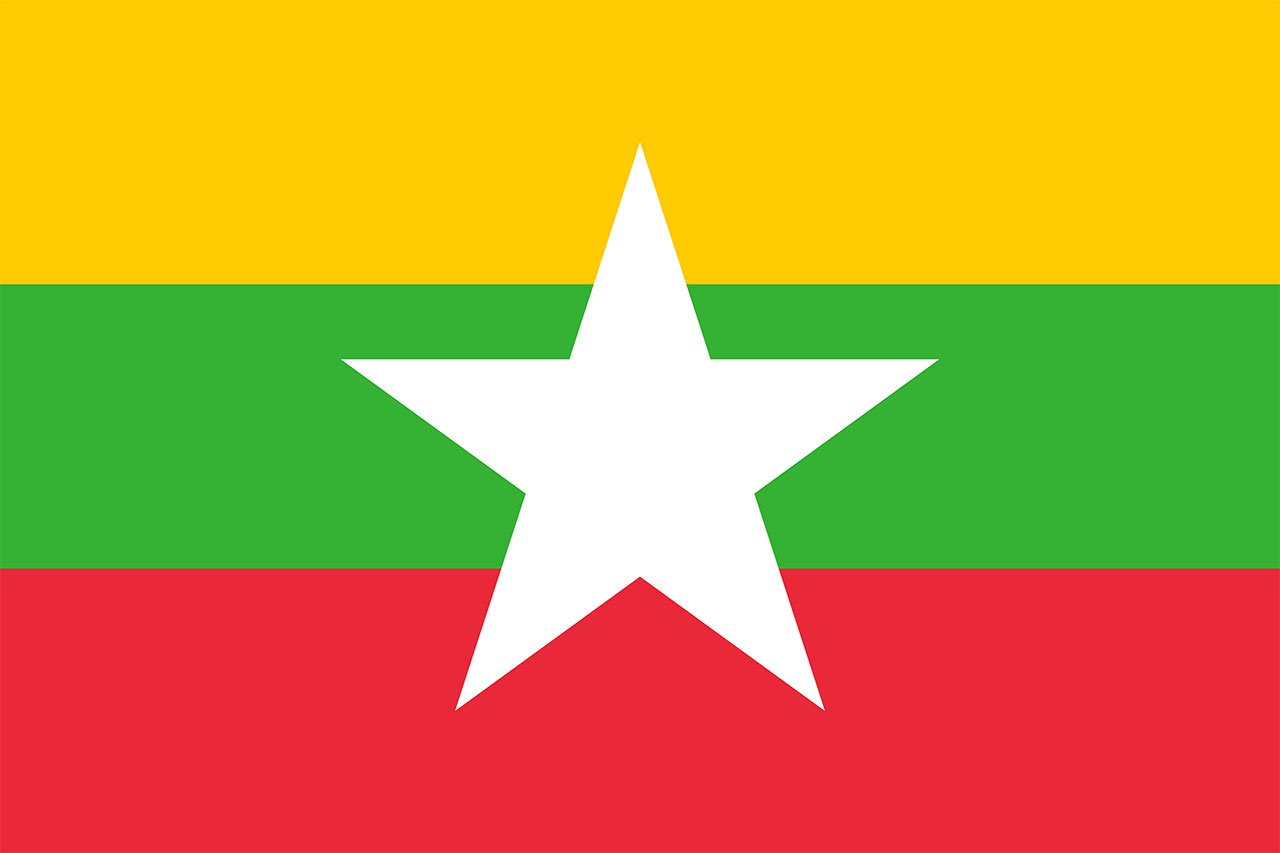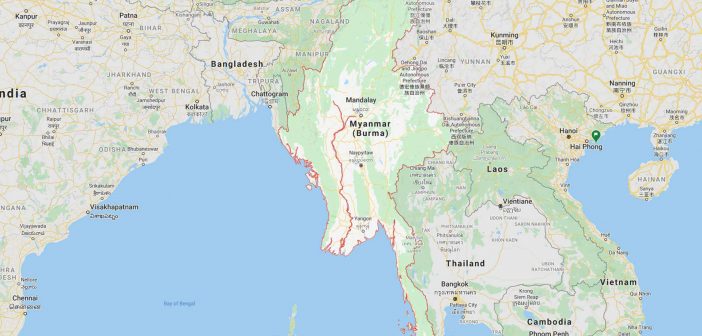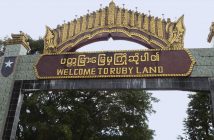In fact, not many people know that much about Myanmar and so we felt it our obligation and privilege to make you party to “Facts about Myanmar: language, climate and 7 more”
[toc]Is it Myanmar or Burma?
The first thing tourists notice is that some people call the country Myanmar whereas others refer to it as Burma. This is strange and somewhat unique.
So what’s it all about?
Well, Burma was what the British called the country during their reign that lasted from 1824 to 1948. The name Burma is derived from the dominant Bamar ethnic group that makes up 70% of the population.
In 1989, Burma officially became the Republic of the Union of Myanmar and Rangoon became Yangon. The new flag of Myanmar was introduced along with implementing changes to the country’s name, which were laid out in the 2008 Constitution.

In a nutshell, Burma is the old name and Myanmar is the new name.
Related post: Should you say Myanmar or Burma?
Location
Myanmar is situated in Southeast Asia and is bordered on the north and north-east by China, on the east and south-east by Laos and Thailand, on the south by the Andaman Sea and the Bay of Bengal and on the west by Bangladesh and India. It is located between latitudes 09 32’N and 28 31’N and longitudes 92 10’E and 101 11’E.
Check Myanmar on Google Maps
Related post: Where is Burma?
States and Divisions
-
Ayeyarwady Division
-
Bago Division
-
Magway Division
-
Mandalay Division
-
Sagaing Division
-
Tanintharyi Division
-
Yangon Division
-
Chin State
-
Kachin State
-
Kayah State
-
Kayin State
-
Mon State
-
Rakhine State
-
Shan State

Myanmar Languages
Many indigenous languages – as distinct from mere dialects – are spoken in Myanmar. The official language is Burmese, spoken by the people of the plains and, as a second language, by most people of the hills. During the colonial period, English became the official language, but Burmese continued as the primary language in all other settings. Both English and Burmese were compulsory subjects in schools and colleges. Burmese, Chinese, and Hindi were the languages of commerce. After independence English ceased to be the official language, and after the military coup of 1962 it lost its importance in schools and colleges; an elementary knowledge of English, however, is still required, and its instruction is again being encouraged.
The local languages of Myanmar belong to three language families. Burmese and most of the other languages belong to the Tibeto-Burman subfamily of Sino-Tibetan languages. The Shan language belongs to the Tai family. Languages spoken by the Mon of southern Myanmar and by the Wa and Palaung of the Shan Plateau are members of the Mon-Khmer subfamily of Austroasiatic languages.
Speakers of Burmese and Mon historically have lived in the plains, while speakers of a unique dialect of Burmese (that perhaps retains some archaic features of pronunciation) have occupied the Rakhine and Tenasserim coastal plains. The hills were inhabited by those speaking Shan, Kachin, Chin, and numerous other languages. In the plains the ancient division between northern and southern Myanmar (Upper Burma and Lower Burma, respectively) was based not only on geographic differences but also on a linguistic one. The Mon (now a small minority) lived in southern Myanmar, while the majority Burman population lived in the northern dry zone.
Until colonial times only Burmese, Mon, Shan, and the languages of the ancient Pyu kingdom of northern Myanmar were written. Writing systems for the languages of the Karen, Kachin, and Chin peoples were developed later.
Myanmar climate – The best time to visit Myanmar
Myanmar’s climate is generally divided into three seasons:
- October to March: dry and winter season
- March to May: hot summer season
- May to October: the wet and rainy season
It is important to choose the period you want to go to Myanmar well. Our advice: from November and February is the best time since the weather is dry and sunny and the heat is quite bearable to enjoy the visits. This will help you avoid the heavy rains that occur during the monsoon and the hot weather from March to May.
As this period is Myanmar’s peak tourist season, service options are more difficult due to the increased demand. So it’s best to try to book them in advance or you will have to pay more for the remaining options.
Myanmar Festivals
The several Myanmar celebrations are meant as mark of culture and some as the abode of following old legends and are purely for entertainment. While a lot of those festivities take place in Myanmar throughout the year, here’s a list of the best celebrations that’ll compel you to be a part of them right away!
- Kachin Manaw Festival: 9th – 10th January, 2020
- Ananda Pagoda Festival: 4th – 9th January 2020
- Naga New Year Festival: 13th – 15th January 2020
- Golden Hilltop festival: 3rd – 9th February 2020
- Thingyan Water Festival: 13th – 16th April 2020
- Shittaung Pagoda Festival: April
- Kason Festival: May
- Waso Chinlone Festival: July
- Taungbyone Nat Festival: 26th Aug – 2nd Sep 2020
- Phaung Daw Oo Pagoda Festival: 17th October 2020
- Thadingyut Festival Of Lights: 30th Oct – 1st Nov 2020
- Kyaukse Elephant Dance Festival: 30th Oct – 1st Nov 2020
- Taunggyi Balloon Festival: 23rd – 29th Nov 2020
- Bodhi Tree Watering Festival: May
- Tipitaka Festival: June
- Regatta Festival: September
Flag of Myanmar
The flag of Myanmar was first hoisted on October 21, 2010, to signify the change in the country’s name from the Union of Myanmar to the Republic of the Union of Myanmar. As with most flags, his banner evokes a deep history and a troubled past, including regime changes that have seen the country change its name from Burma to Myanmar. The tricolored yellow-green-red flag is a reminder of the changes, invasions, and resilience of the country.
Related post: Myanmar Flag – Full list of Flag of Myanmar since 1300

Local Currency in Myanmar
The local currency is kyat (pronounced ch-yat), and this is the main form of tender used across the country. Previously, larger bills such as accommodation, overnight buses, and tours were payable in US dollars.
Although this may still be possible under certain circumstances, kyat is now the preferred currency, and visitors should plan to pay most expenses with it.
Major hotels in cities may accept payment by credit or debit card. This may however come with some heavy fees and less than desirable exchange rates, as well as lacking any guarantee that it’ll actually be functioning on the day. Be sure to check it out thoroughly before using the service, and have a back-up plan in case paying with a card isn’t possible.
Myanmar Culture and Tradition
A long and rich cultural life runs through Myanmar’s long and rich history, with Buddhist architecture the most dazzling example of this nation’s creativity. You’ll find more modest cultural expressions in the beautiful gold and silver work, the lotus silk scarves and pretty lacquerware bowls and cups still widely used and made typically by hand, as part of an artisan tradition. It is Myanmar’s relative isolation that has helped preserve its culture; the country remains more untouched by modernity or the West than neighbouring Thailand, for instance. It also means it’s still finding its feet as a new destination for tourists, and has more recently hogged the headlines for ethnic cleansing rather than cultural achievements. That said, Myanmar is a huge country, largely untainted by political strife, with a wealth of culture to come and enjoy.




